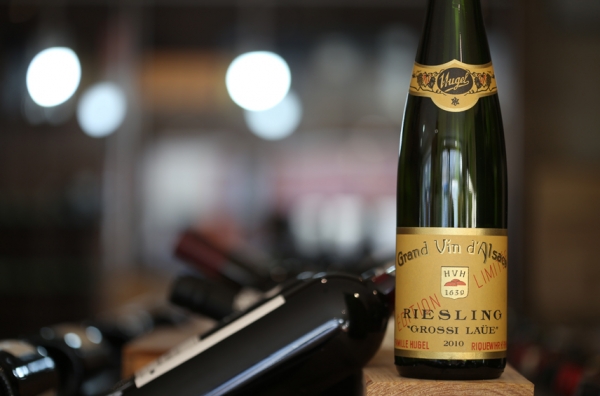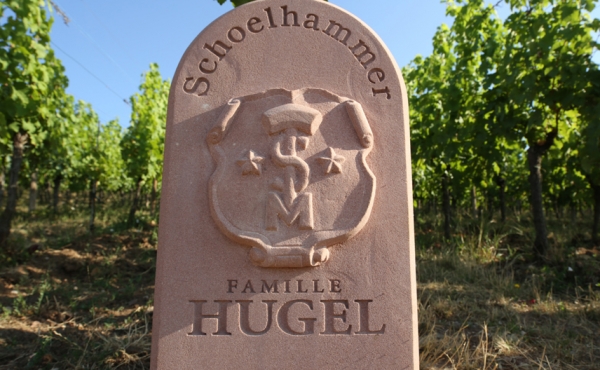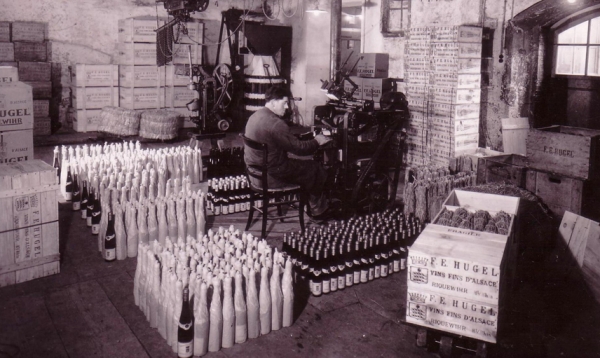
As a wine producing region, Alsace is both complicated and diverse. This is not least because, as much as the terroir, recent history has had quite an impact on the wines produced in this particular part of northeast France.
Etienne Hugel is the commercial director of Famille Hugel, one of the region’s top end producers. Staking his claim for a reassessment of Alsace’s output, he says: “Many people think it is a very simple region – just eight grape types and eight different kinds of wine. Actually, though, there is a greater diversity of Riesling in Alsace than there is of Chablis in Burgundy.
“Alsace is a mosaic of soils, with volcanic, slate, granite, schist and red sandstone all to be found. Around us in Riquewihr, on two fault lines, there is also marly soil – a clay and limestone mix, the result of centuries of sea deposits. In fact, the village has at least 10 different types of soil, within the space of just one and a half kilometres.”
The Hugel family can trace its history in Alsace back to 1639. Perhaps unsurprisingly, it is also a member of the highly exclusive Primum Familiae Vini association. This body is limited to 12 winemaking families and includes such notable surnames as the Antinoris, the Rothschilds and the Symingtons.
Set close to the River Rhine, Alsace has long been the subject of historical territory disputes. Over the centuries, its ownership has regularly alternated between Germany and France. The region formally became part of France under the Peace of Westphalia, a series of treaties that brought the Thirty Years War to a final settlement. This, though, was not the end of the story.
Explaining the shifting sands that have shaped the region, Hugel says: “We were French from 1648 onwards, but then the Germans won the Franco-Prussian War. Alsace was the price France had to pay.
“Back in 1871, the name of the company was Hügel & Söhne, the brand during the German time. Then, in 1918, we were French again. During the Second World War, of course, we were back to being German.”
Alsace is home to a number of notable producers, including Maison Trimbach in Ribeauville, Domaine Zind-Humbrecht in Turckheim, and Marcel Deiss in Bergheim. All of them – including Hugel – make wines that, while being distinctively Alsacien, embody both French and Germanic elements.
Etienne Hugel’s father and uncle were both wartime conscripts in the German army. The memory of their experiences is fresh enough for the German aspects of the house to be seldom acknowledged. Hügel – meaning “hill” – is a German name. The absence of the umlaut from the family’s wine labels, though, is no accident.

Tellingly, there are no signatures in the estate visitor’s book from 1940 to 1945. Bluntly explaining this apparent omission, Hugel says: “Nobody was considered decent enough to be allowed to sign.” A further sign of the family’s allegiance can be found in the company’s files, where a thank you letter from Winston Churchill for a 12-bottle case of wine takes pride of place.
Jean Hugel, Etienne’s uncle, was a hugely influential figure in the development of Alsace as a wine region after the end of the World War II. It is no coincidence that it was only after his death that the family reintroduced a recognisably German element to the wine’s packaging.
On a recent visit to Hong Kong, Etienne Hugel was keen to introduce the marque’s new range of wines, the successors to its Jubilee Collection, launched in 1989 to celebrate the family’s 350th anniversary. This latest range rejoices under the title of Grossi Laüe “Great Growth” in the Alsacien dialect. The term might actually have been introduced earlier had Jean Hugel felt able to countenance an umlaut on a Hugel label.
Quoting Robert Parker’s description of the family’s 2010 Pinot Noir Grossi Laüe, Etienne Hugel said: “Grossi Laüe signifies the finest vineyards … and represents an equivalent to the German Grosses Gewächs or the Burgundian Grand Cru.
“This is a Pinot Noir with real minerality, profound and deep that every year comes closer to the quality of a Côte d’Or. It is a truly profound and complex red wine, one that is aged for eight to 10 months in partially-renewed oak barriques.”
While the wine certainly tasted more like a Burgundian Pinot Noir than a German Spätburgunder, there was a degree of strategy behind the inclusion of that symbolic umlaut. In truth, the family is looking to edge Alsace’s finest into the spotlight hogged by German wines since the beginning of the Riesling revival, a phenomenon particularly notable in the United States. Making this bid more explicit still, a superb 2010 Riesling Grossi Laüe was also among the wines Hugel sought to introduce to Asia’s more discerning wine drinkers.
Clearly making his pitch to such connoisseurs, Hugel said: “Riesling is back after 30 years of hell, but now it is dry Riesling. We, of course, believe that we know how to make these particular wines much better than the Germans do.”
As well as introducing Grossi Laüe, Hugel was in Hong Kong to highlight coming changes to the style and branding of all Hugel wines. The range now features redesigned labels and a number of new bottles. The occasion also marked the introduction of several new wines in the Famille Hugel range, wines principally derived from Muscat and Pinot Gris.
While Hugel’s wines are now distributed in Hong Kong and China by Summergate Fine Wines and Spirits, this does not mark their debut. Back in 1950, they were originally introduced by Jardine Matheson.

Looking back on the marque’s Asian connection, Hugel said: “In 65 years we have only had three importers working for us in Hong Kong. That tells you a lot. We’ve actually had the same importer in Thailand for 55 years, while we’ve only had two in Japan since 1950. Japan is now our third largest export market, something I think my grandfather might not entirely have approved of.”
The chief executive of the family firm is currently Jean Philippe, while the wines are made by Marc, his elder brother. Except for the United States, which comes under the auspices of his son, Jean Frederic, Etienne is the roving ambassador for the company’s wines. In this role, he has long had particular interest in Asia. His wife, Kaoru, after all, is Japanese and was formerly a sommelier at the Mandarin Oriental in Tokyo .
Clearly emboldened as to the marque’s prospects across Asia, he said: “I believe my brother is responsible for the best wine my family has ever made. I also think we have the best distribution of any Alsace wine producer.
“Hugel is now the leading Alsace wine in every Asian country. That did not come about by itself. Japan was historically our biggest Asian market, while our wine have been sold in Hong Kong since 1950, as indeed they have in Singapore. We’re now the number one Alsace brand in every market in Asia, including India and Sri Lanka. We’ve also just visited Phnom Penh, so we will soon even have wines in Cambodia.
“All of this is the result of our real focus on Asia. You don’t have to be a genius when you are visiting Shanghai, Guangzhou or Shenzhen to see that Asia will be the centre of the world. You are all very lucky. Except, maybe, for the pollution, of course.”
While it certainly sounds impressive, the numbers associated with some of those countries may well not be very large. It could also be that, in some of them, Hugel is not only the leading Alsace brand, but also the only one. That aside, the wines certainly do suit Asian climates and cuisines.
Crisp and aromatic with ample depth and complexity, there is nothing in the Hugel range that wouldn’t be welcome on a hot summer’s day. When it comes to the dry Rieslings, they seem made for pairing with Cantonese dishes. Similarly, the spicier Gewürztraminers would stand up well with Sechuan or Thai cuisine, while the Pinot Noirs are a good alternative to classic red Burgundy and duck combinations.
In truth, you can’t go far wrong with anything in the Hugel Classic range. The very best introduction to the family’s wine – and indeed to those of Alsace in general – is the Hugel Gentil, a blend of Riesling, Pinot Gris, Pinot Blanc, Gewürztraminer, Muscat and Sylvaner. Modestly acknowledging its quality, Etienne says: “We don’t make anything worse than this.” As an entry-level wine, the 2014 vintage sets the bar pretty high.
For many, though, the highpoint of the tasting was the Gewürztraminer Vendange Tardive 2007 – luscious, elegant, perfumed and literally crying out to be paired with foie gras or Roquefort.



